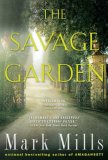Book Club Discussion Questions
In a book club? Subscribe to our Book Club Newsletter and get our best book club books of 2025!
For supplemental discussion material see our Beyond the Book article, Background and our BookBrowse Review of The Savage Garden.
Please be aware that this discussion guide will contain spoilers!
Introduction
The summer of 1958 begins inauspiciously for art student Adam Strickland.
Nearing the end of his university studies, he is dumped by his girlfriend for
being “somewhere between ‘boring’ and ‘bland’” and is pressured by his father to
begin a career in insurance. To make matters worse, the deadline for his thesis
paper is looming, the topic of which has gone through several unpromising
incarnations. On this last issue, Adam’s professor, Crispin Leonard, offers a
solution: an investigation of the Renaissance-era garden at the Tuscan villa of
his old friend Signora Docci. Accepting the assignment, Adam departs for Italy
with little hint of what is to come, save for Professor Leonard’s cryptic
warning about the elderly Signora: “Don’t underestimate her.” It is a warning
that proves more prescient than even the professor could have imagined.
David Mills’ The Savage Garden is a novel rich with history, intrigue, and
psychological drama. Set in an Italy still recovering from the wounds inflicted
by World War II, the novel reveals the troubled history of the Docci family,
seemingly cursed by the crimes of its progenitor, Federico Docci, some four
centuries earlier. Although his misdeeds were never discovered, Federico’s
legacy continues to haunt the modern-day Doccis, who live under the shadow of a
similarly heinous act committed at the end of the war. The key to both of these
secrets lies frozen in time at the Docci estate: in the memorial garden designed
by Federico, unaltered in over four hundred years, and in the sealed-off third
floor of the villa, where Signora Docci’s son Emilio met his violent end.
Stepping naively into this world, Adam initially approaches his work as an
academic exercise. He begins by dutifully cataloguing curious inconsistencies of
the garden, which was ostensibly conceived in memory of Federico’s young wife
Flora. Soon, however, these inconsistencies begin to seem more like clues - an
elaborate puzzle constructed around Dante’s Inferno and pointing to the true
cause of Flora’s death. Signora Docci is delighted by Adam’s work, treating him
as an honored guest and sharing stories of the Docci family. But her true motive
is to guide Adam to unravel the one story that no one is eager to tell – what
really happened on the third floor, and what role the Signora’s son Maurizio
played in his brother’s death. As Adam comes closer to uncovering the truth, he
attracts the attention of several people who would prefer that the past remain
buried – and who are more than willing to bury Adam along with it.
Discussion Questions
- Explaining her fondness for the Scottish, Chiara tells Adam that “they
were hill people, like the Italians. Hills had names, they had stories
attached to them. Peaks and passes had been defended, battles had been
fought in their valleys. You couldn’t ignore hills, they seeped into your
marrow, they became part of you.” Using this passage as a starting point,
discuss the significance of geography and location in the novel.
- The novel contains several brief chapters of unattributed dialogue
between two people, whom we quickly learn are Signora Docci and Maria. How
does the author use these chapters to build tension? What other narrative
techniques does he employ? Are they effective?
- In the opening and closing passages, Adam thinks back on his life before
he left for Villa Docci: “He barely recognized himself… Try as he might, he
couldn’t penetrate the working of that stranger’s mind.” In what ways does
Adam change through the course of the novel?
- Signora Docci describes at great length her father’s self-destructive
quest to disprove Darwin’s theories. How does this story connect to the
larger themes of the novel?
- World War II is a major presence in the story, from the physical
destruction caused by the war to the lingering psychological scars of the
Nazi occupation of Italy. Discuss the importance of history in the novel.
Why did the author choose to set his story in this particular era?
- Adam spends the first half of the novel dreading the arrival of his
brother, Harry – yet Harry’s presence proves invaluable to Adam’s
investigations. Discuss the relationship between the two brothers. Is it
significantly changed by the events of the novel, or does it remain
fundamentally the same?
- The story opens with the first pages of a novel written by Adam’s
girlfriend, Gloria. What is the effect of this opening? Does this glimpse of
Gloria’s novel offer any clues to the themes of The Savage Garden?
- Signora Docci maintains that Professor Leonard had no idea that Emilio
was his son. Do you believe this? Is it possible that, in addition to
Signora Docci’s manipulation of him, Adam was also used by the professor to
discover the truth about Emilio?
Unless otherwise stated, this discussion guide is reprinted with the permission of Berkley Books.
Any page references refer to a USA edition of the book, usually the trade paperback version, and may vary in other editions.
